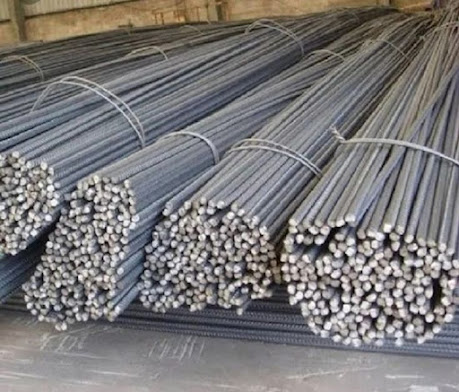Why are
TMT Rebar Preferred over Standard Steel Bars?
These heat-treated and mechanically operated bars TMT are high-strength reinforcing bars with a soft internal core and a hardened external core. They are made using a process called thermo-mechanical treatment, hence their name. They are made by passing hot-rolled steel billets through water, which hardens the surface and increases its tensile strength. At the same time, the inner core stays at a relatively higher temperature and therefore becomes more ductile.
Advantages of TMT Bars
Here are the following benefits one gains out of using TMT Bars:
- Mild steel bars were previously used for small-scale construction due to their low yield strength, but later high yield strength deformed bars were invented to strengthen large-scale construction of heavy structures.
- As the scale of construction increased, and the need for durable structures arose. As a result, TMT bars were invented with better quality in bendability, weldability, fire resistance, corrosion resistance and high dimensional tolerance.
- TMT bars have a more durable exterior layer due to the malleable microstructure of the core and the thick crystalline outer surface of TMT steel.
- TMT bars have a higher tensile strength and smaller residual stresses.
- TMT bars have better corrosion resistance properties.
- TMT bars have fewer surface defects compared to HYSD bars because they do not involve torsional stress.
- TMT bars can be used in various types of construction work due to their amazing flexibility and ductility.
Due to these many advantages, one must opt for TopTMT Saria in Ajmer.
What is the thermomechanical treatment process?
By adopting a thermomechanical treatment process, a higher resistance of TMT bars is obtained. In this process, the steel bars get intensive cooling immediately after rolling. When the temperature is suddenly lowered to harden the surface layer, the inner core is hot simultaneously. Due to increased cooling in the atmosphere and heat from the core, quenching takes place. This process improves properties such as yield strength, flexibility and toughness of TMT bars.
In general, one can obtain higher strength from TMT bars by increasing carbon content, microalloying, and thermomechanical treatment or cold torsion. Until now, in India, the cold twisting of the bars has been widely used to produce high strength bars. The two notable ribs become helical during the cold twisting method, while these hot rolled bar ribs are straight. Excess carbon content threatens your weldability property.
In TMT bars in Ajmer, this problem has been eradicated. In these bars, the carbon content has also been reduced, which improves elasticity and can be restricted to 0.2% to achieve weldability while, at the same time, no strength is lost. Joints can be welded with common electrodes without additional precautions.
- Better flexibility and malleability.
- High yield strength and toughness
- More bonding strength
- Resistance to corrosion
- High thermal resistance
- Economical and safe use
- No loss of strength in welded joints.
Common electrodes are used for welding the joints.







No comments:
Post a Comment